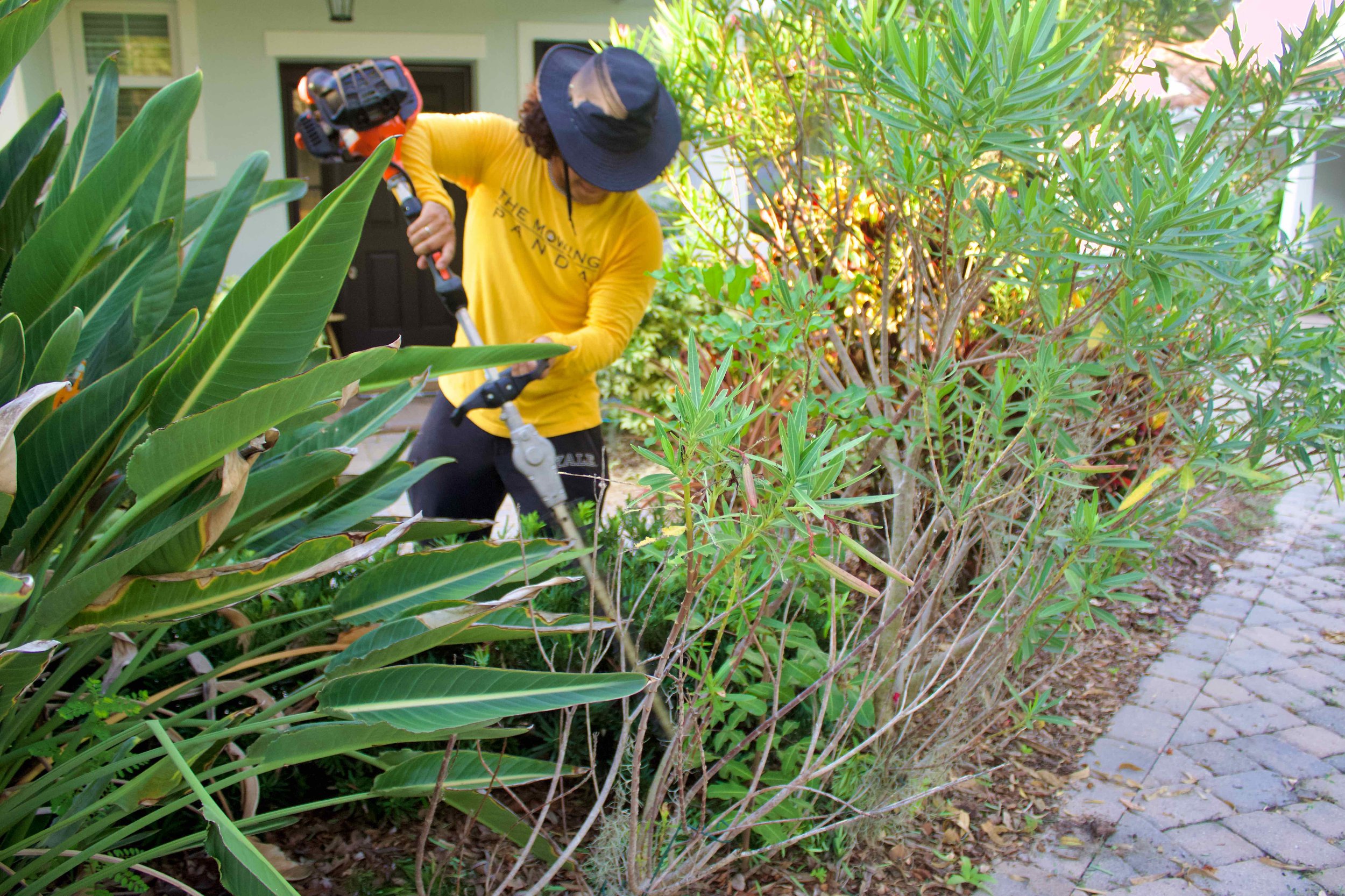Common Trimming Mistakes (And How to Avoid Them)
Trimming around edges, flower beds, and trees can sharpen your lawn’s look—but make mistakes, and you risk injury to grass, plants, and trees. Avoid these common trimming errors:
1. Trimming Too Low
Trimming too low or edging aggressively can “scalp” the turf, exposing roots, weakening grass, and inviting weeds. Avoid removing more than one-third of the blade height in a single pass, and keep the cutting height appropriate for your grass type .
Fix: Trim no lower than 2–3 inches above soil level, especially near edges and flower beds.
2. Damaging Tree Bark
String trimmers nicking tree bark can severely harm or kill young trees. Weed whackers are one of the top causes of tree damage. Use mulch rings or manual trimming around trunks to avoid contact.
Fix: Use tree rings, mulch buffers, or trim carefully by hand near trunks.
3. Trimming Wet Grass
Using trimmers on wet grass leads to clumping and tearing rather than clean cutting, resulting in uneven edges and potential fungal issues. Always wait until the grass is dry for crisper results .
Fix: Wait until the grass is dry for cleaner lines and less mess.
4. Using the Wrong Angle
Holding the trimmer at the wrong angle, such as digging teeth too deep into the ground, can damage lawn edges, expose soil, and harm grass roots. Keep the trimmer head level and move slowly and evenly.
Fix: Keep the trimmer head level and move steadily, sweepingly.
5. Over-trimming Around Edges
Constantly cutting soil near patios, sidewalks, or beds can erode the turf edge and expose roots over time. Avoid digging into the soil, and maintain a consistent trimming buffer .
Fix: Keep your trimming consistent and avoid “digging” with the trimmer line.
6. Using Dull Trimmers or Blades
While this overlaps with mowing, dull lines and blades can tear grass and shrubs, causing ragged cuts and increased disease risk. Keep all trimming tools sharp for clean results .
Call The Mowing Panda for expert lawn care and a clean, professional finish every time.
Sources:
University of Georgia turf science: trimming too low weakens grass and invites pests/disease
Nashville Tree Conservation Corps: trimmers are among top threats to young trees
Lawnstarter and The Spruce: trimming wet grass and dull tools cause tearing and uneven results
Good Nature Organic Lawn Care: wrong trimmer angle leads to scalping and soil exposure
Hoffmans Lawn & Fertilization: dull trimming tools damage plant tissue and hinder regrowth


